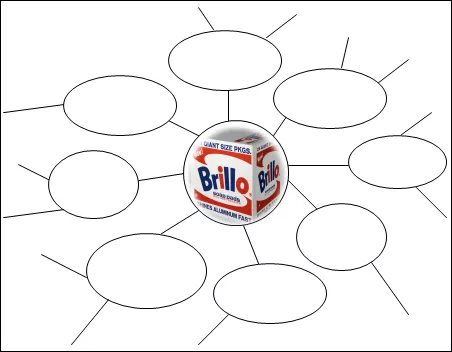The following assessments can be used for this lesson using the downloadable assessment rubric.
- Aesthetics 1
- Aesthetics 2
- Aesthetics 3
- Communication 2
- Communication 3
- Critical thinking 1
- Critical thinking 2
- Critical thinking 3
- Critical thinking 4

Warm-up Word Association:
1. Create a list of words and phrases ahead of class time. Please keep students’ interests in mind as you create your list. We suggest using words from different categories such as:
2. Explain to students they should write a list of the first things that come to mind (intuitive response) as they hear each word. Call out the list of words you created quickly.
3. Students share their responses and discuss the reasons why they made their associations.
4. Students determine whether their associations are personal tastes or biases.
Brainstorming Webs:
1. Use the Musical Tastes and Biases handout to identify, list, and clarify students’ thoughts. In this step, students identify what they like and dislike, how they judge music to be good or bad, and why they have certain opinions. Students should choose two musicians or bands—one that they like and one that they dislike—and then make a brainstorming web for each. Instruct them to write out all of the things they know about the music—their likes, dislikes, and assumptions.
2. Students present their webs and explain their answers. Encourage them to explain ideas more fully when their answers are unclear.
3. Students examine their webs and pick out which statements are tastes and which are biases, creating two lists on page three of the Music Tastes and Biases handout.
4. Use the Art Tastes and Biases handout to repeat the brainstorming web activity from above for two visual artworks. Use Andy Warhol’s Brillo Boxes and another visual piece of your choice.
5. Students present their visual art webs and discuss individual ideas.
6. Students use the webs to create individual lists of art tastes and biases on the third page of the handout. It may be useful for them to keep this list and refer to it throughout the rest of the unit.
Class Discussion:
– What are some similarities and differences between personal tastes and biases?
– When was it difficult to distinguish between the two? When was it easy?
– How might tastes and biases affect a critic’s response?
The following assessments can be used for this lesson using the downloadable assessment rubric.